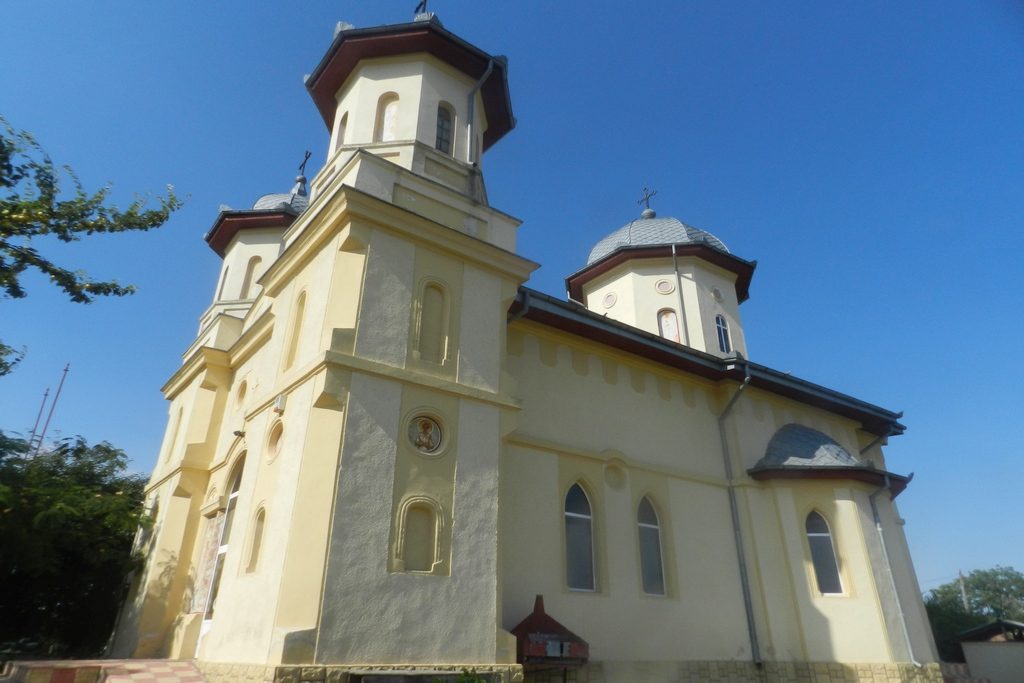

On the lands of Dobrogea, in the year 470, there was born the Pious Dionisie the humble, from Christian parents. He embraces from a young age the monk life, being cut in the monastic churchdom at one of the well-known monasteries from the Eparchy of Tomis.
Around the year 496, the Pious Dionisie goes to Rome, translating the canons of the Ecumenical assemblies from Greek into Latin, as well as the patristic works. He founded the Dionysian Christian era, instead of the Pagan era, starting with the calendar and with numbering the years from the embodiment of Jesus Christ.
The Pious Dionisie died in 545, in the monastery Vivarium from Calabria, Italy, being canonized as Pious Saint by the Romanian Orthodox Church in the year 2008 and his celebration is made on the day of the 1st of September.
The second titular saint of the monastery is the Saint Efrem cel Nou. Saint Efrem (Constantinos Morfis after the baptize name) was born in the Greek city Trikala on the 14th of September 1384 (on the day of the Holy Cross). At 14 years old he left at the monastery the Annunciation of the Lord, from the Mountain of the Chaste leaving his parents’ home, the mother widow and his 7 brothers, running from the Turks.
In the year 1424, the Turks invading the monastery they killed by sword all the monks. Saint Efrem was back then in the cave, up in the mountains and when he got back he found the deceased bodies of the monks. After a year, on the 14th of September 1425 (also on the day of the Holy Cross), when Saint Efrem was turning 41 years of age and 27 years of living the harsh monk life, he was taken under slavery by the Turks who attacked the monastery from the Hillock of the Chaste, and the other monks from his community were decapitated.
The Turks tortured Saint Efrem numerous times and in many ways, for 8 months, hoping that he will make him give up his orthodox faith and make him a Moslem. Seeing that by the multitude of sufferings to which they subjected him, they couldn’t convince him, the Turks decided to kill him and they hung him by a tree with his head upside down (more exactly by a mulberry tree which still exists in that place), they cut through his body will long steel nails, then they thrust his womb with a lighted smoldering brand. Following these awful torments, Saint Efrem cel Nou, Great Forty Marty, died on the date of the 5th of May 1426, at the age of 42.
Saint Efrem cel Nou, the Great Forty Martyr from Nea Makri, was canonized and recognized officially as a Saint by the Greek Church in 1998, and by the Ecumenical Patriarchy from Constantinople, in 2011, his celebration being on the date of the 5th of May in every year, and the finding of His Holy Relics is celebrated on the date of the 3rd of January of every year.
In the memory and in the honor of his facts and works of the pious Dionisie and Efrem cel Nou, in the year 2009, there was set the foundation of this monastery from the initiative of the diocesan of the place, His Eminence Teodosie, Archbishop of Tomis, being a monastery of nuns with the communal life. In the summer of the year 2011 there was chosen the land for building up the Holy Place of Worship from the commune Târgușor, the county of Constanța. In the summer of the same year, there were built the chapel, four sanctums, the refectory and the outbuildings, starting at the same time the monastic order. After a short period of time, on the 3rd of September of the same year the chapel was consecrated and there was performed the first service.
In the monastery there can be found a copy of the Icon of the Mother of God, from the Monastery Dohiariu from the Holy Mountain Athos.
